Hibiscus tea, with its deep red color and tart flavor, is a popular beverage enjoyed both hot and cold. It’s made from the dried parts of the hibiscus plant and is known for its potential health benefits, including reducing blood pressure and offering high levels of vitamin C. However, some find the taste of hibiscus tea a bit too sour for their liking. If you’re among them, fret not—there are plenty of simple ways to enhance the flavor profile of your hibiscus tea to suit your palate.
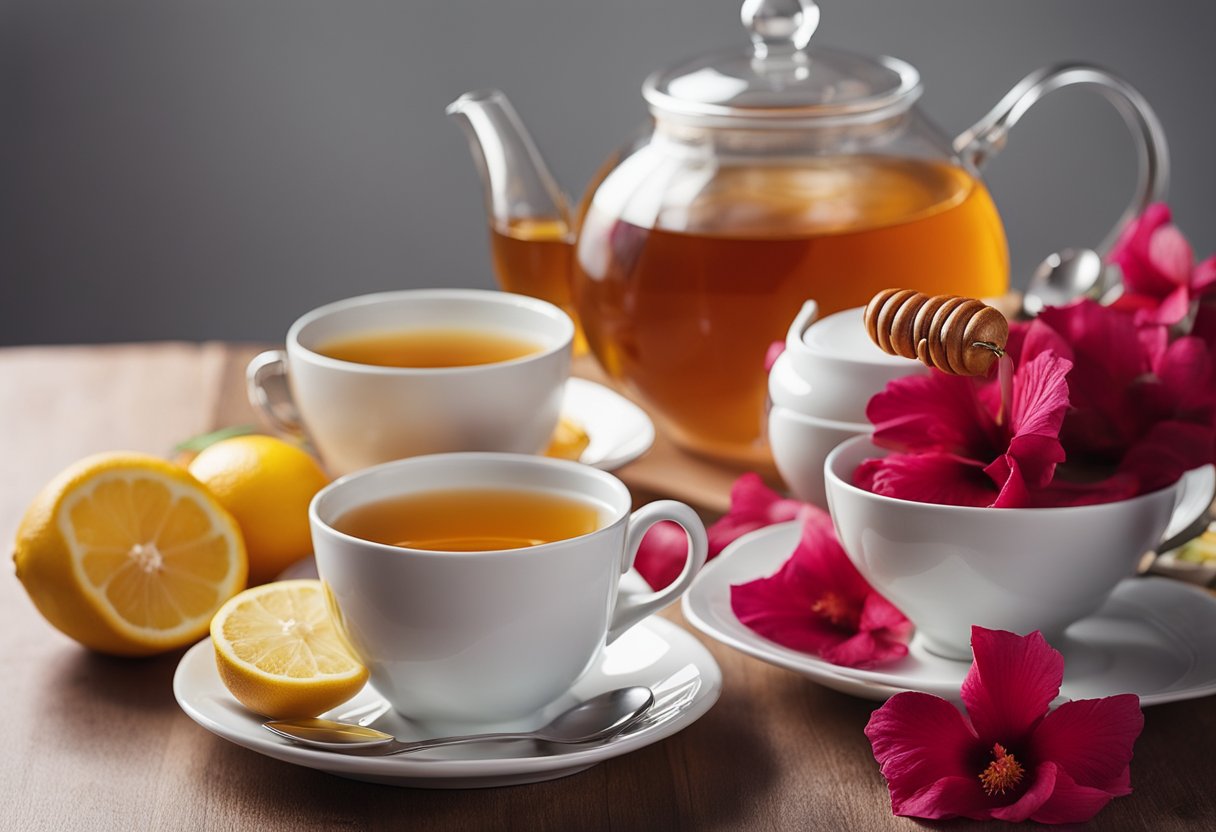
To make your hibiscus tea taste better, consider incorporating natural sweeteners like honey or agave syrup; these can soften the tartness without overwhelming the tea’s intrinsic flavor. Experimenting with spices such as cinnamon, clove, or nutmeg can add warmth and complexity. For a refreshing twist, add a slice of lemon, lime, or a sprig of fresh mint—these elements can complement the hibiscus’s floral notes and create a more rounded flavor experience. By playing with these additions, you can transform your tea into a delightful personal concoction that you’ll look forward to sipping on.
Essential Ingredients for Hibiscus Tea
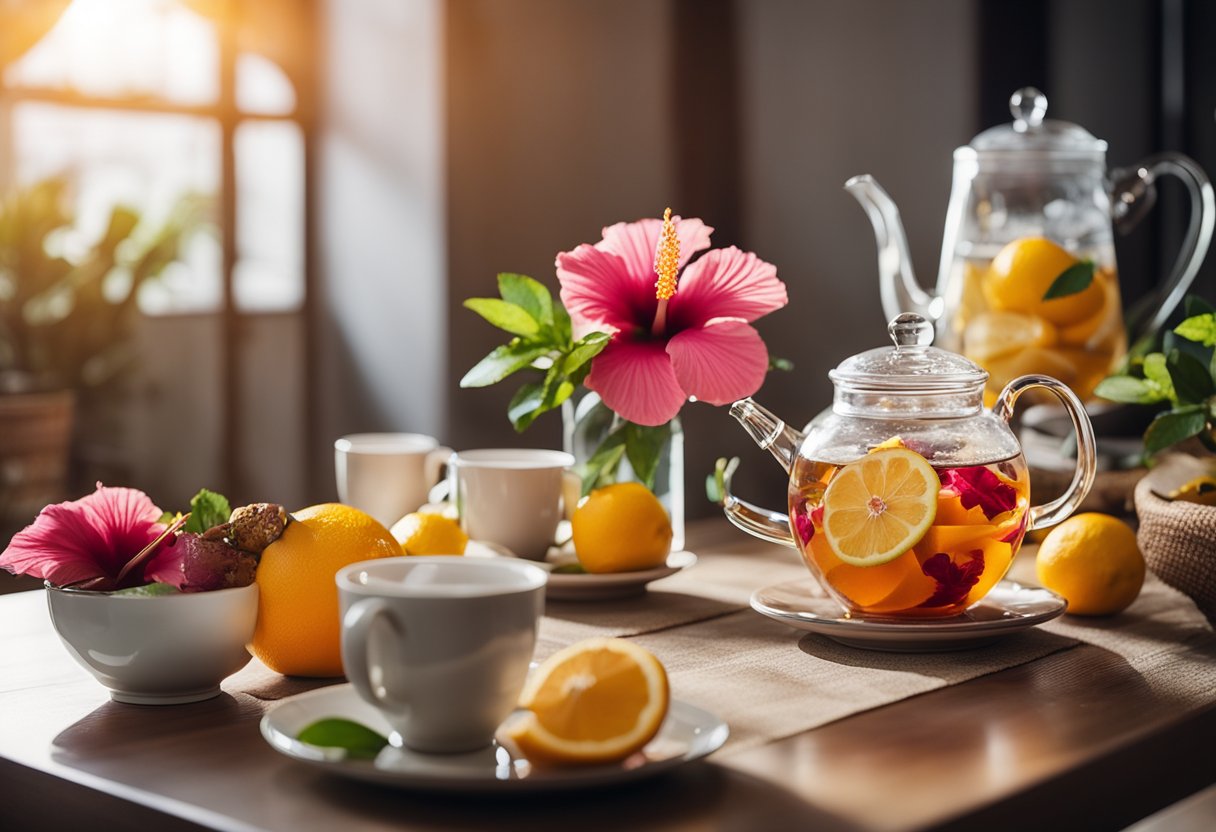
To craft a delicious cup of hibiscus tea, incorporating high-quality hibiscus flowers, selecting the right sweeteners, and adding citrus notes can elevate this tangy beverage to new heights.
Choosing the Best Hibiscus Flowers
The foundation of great hibiscus tea starts with selecting high-quality dried hibiscus flowers. You’ll want to look for flowers that are deep red in color as they typically offer a more vibrant flavor. Fresh, organic hibiscus flowers can also be used, but ensure they are free from pesticides and rinsed thoroughly.
Sweetening Options that Complement Hibiscus Tea
Hibiscus tea has a naturally tart flavor that some drinkers may want to sweeten. Options include:
- Honey: A natural sweetener that adds a rich, comforting flavor.
- Sugar: Simple and straightforward, sugar balances the tartness without complicating the taste.
- Other Sweeteners: Agave, stevia, or maple syrup can also be used to suit your personal taste preferences.
When choosing a sweetener, start with a small amount and adjust to your liking to avoid overpowering the hibiscus notes.
Enhancing with Citrus Notes
To add a refreshing twist to your tea, incorporate citrus. Here are some suggestions:
- Lemon: A slice or a squeeze of lemon juice can brighten the tea and add a layer of complexity.
- Other Citrus: Lime or orange also pair nicely, offering a different type of citrus zing.
The addition of citrus not only adds flavor but can also assist in the absorption of various beneficial compounds found in hibiscus tea.
Preparation Techniques for Enhanced Flavor
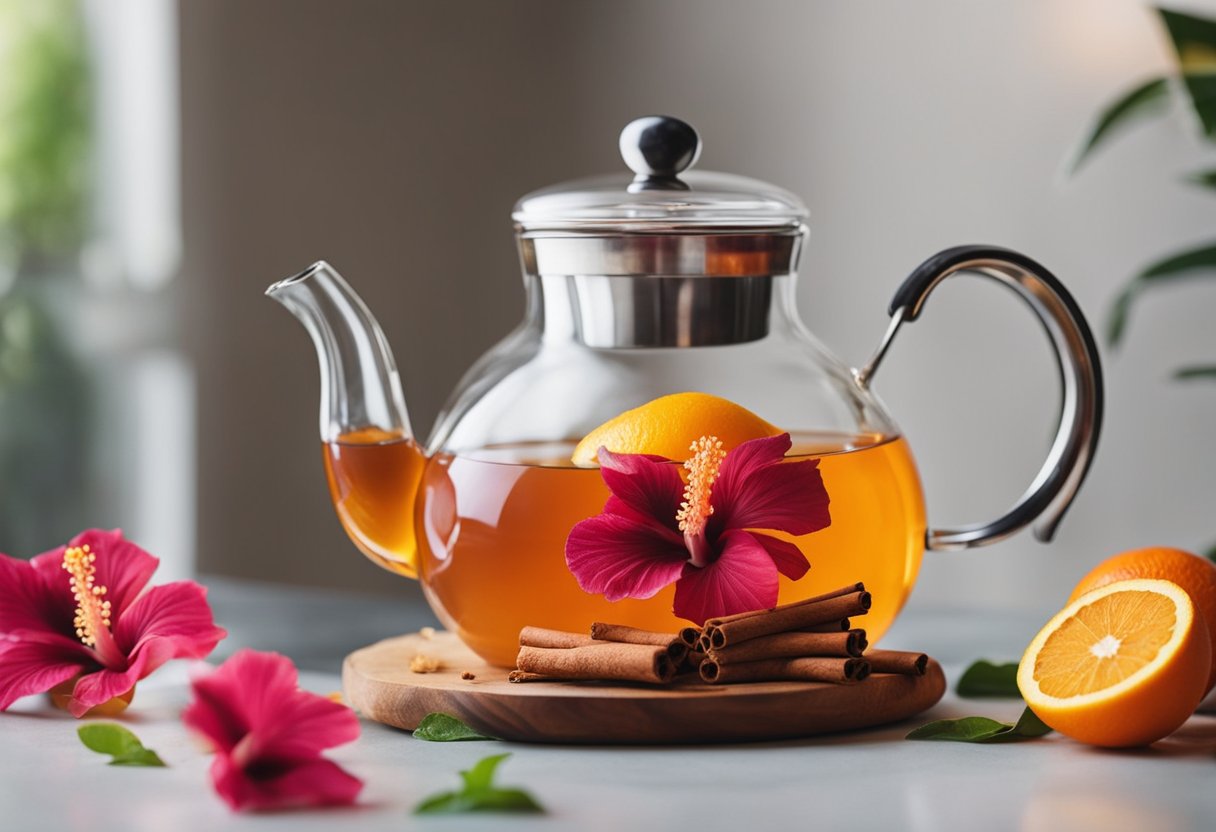
When you’re looking to unlock the full potential of hibiscus tea, employing the right preparation techniques is key. Whether you prefer your tea hot or iced, these tips will help you enhance the flavor for a truly delectable cup.
Perfecting the Hibiscus Tea Brewing Process
To start, select high-quality dried hibiscus flowers; this will be the backbone of your tea’s flavor profile. Heat your water to just below boiling—about 200°F, as boiling water can make hibiscus tea taste bitter. Use a strainer to avoid any loose petals in your cup.
Brewing Time and Temperature:
| Water Temperature | Brewing Time |
|---|---|
| 200°F (93°C) | 5 minutes |
For a richer taste, cover the tea as it steeps; this retains heat and allows for a full extraction of flavors. Stirring gently halfway through steeping can also disperse the taste evenly.
Creative Ways to Serve Hibiscus Tea
After brewing, you have two delightful ways to serve it—hot or as iced tea. For a warm and cozy drink, simply pour the hot tea into your favorite mug and add a slice of lemon or a cinnamon stick for a subtle spice. If it’s too potent, add some boiled hot water to dilute it according to your taste.
To transform your brew into a refreshing iced tea perfect for summer, let the tea cool and then pour it into a pitcher. Add ice cubes, and garnish with slices of tropical fruits like pineapple or mango to give it a fun twist. You can even add a sprig of mint for that extra zing. Sweeten your iced hibiscus tea with honey or agave if you prefer it less tart.
Remember, whether hot or cold, hibiscus tea is caffeine-free, so you can enjoy it at any time of the day without the worry of a caffeine-induced buzz. Use these tips, and you’ll serve up a cup of hibiscus tea that’s just as enjoyable to look at as it is to drink.
Exciting Flavor Add-Ins and Variations
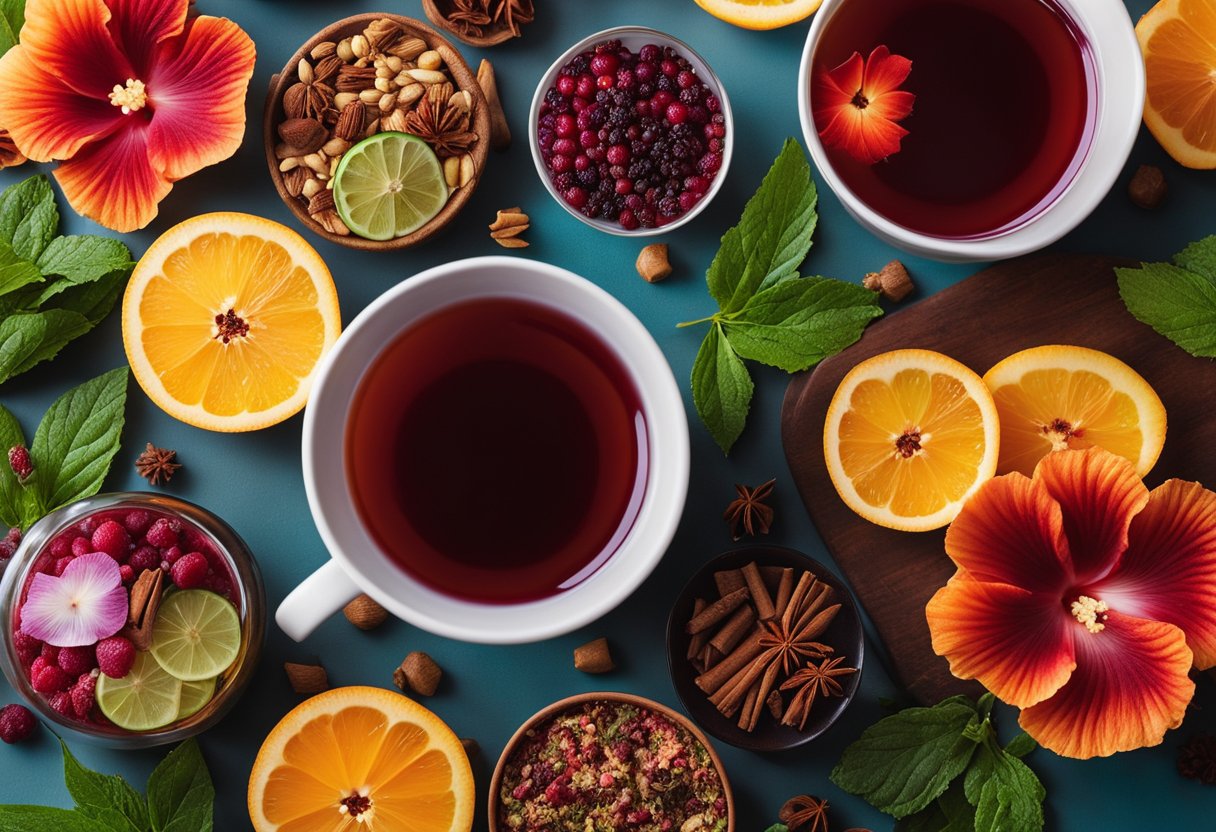
Elevate your hibiscus tea experience with delicious fruits and aromatic herbs and spices that complement its naturally tart flavor.
Fruit Infusions that Brighten Hibiscus Tea
- Lime: Squeeze fresh lime juice into your brewed hibiscus tea for a zesty kick that enhances its tartness.
- Fruity Twists: Add slices of fruits such as oranges, peaches, or berries into your tea to infuse a natural sweetness and a burst of fruity flavor.
Incorporating fruits not only adds layers of flavor but also creates a visually appealing drink that’s as delightful to look at as it is to sip.
Herbal and Spice Combinations for a Twist
- Mint Magic:
- Fresh mint leaves can bring a cooling and refreshing quality to your hibiscus tea.
- For a Latin-inspired variation, mix in some agua de jamaica with mint to create a refreshing summer beverage.
- Spice it Up:
- A cinnamon stick or a dash of ground cinnamon adds warmth and complexity to the tangy profile of hibiscus.
- Ginger, either freshly grated or in slices, introduces a spicy kick that complements the tea’s natural flavors.
Experiment with these add-ins to discover new layers of flavor in your hibiscus tea.
Health Benefits and Considerations

When you sip on hibiscus tea, you’re not just enjoying a tart and refreshing beverage—you’re also partaking in a drink with notable health benefits. However, like any botanical brew, hibiscus tea comes with certain considerations that you should be aware of.
Nutritional Advantages of Drinking Hibiscus Tea
- Vitamin C: Hibiscus tea is a great source of vitamin C, which is essential for the health of your immune system.
- Antioxidants: The drink is rich in antioxidants that help fight free radicals, potentially reducing the risk of chronic diseases such as heart disease and cancer.
- Blood Pressure Control: Regular consumption can lead to improved blood pressure levels, especially useful if you’re managing hypertension.
- Cholesterol Management: Some studies suggest that hibiscus can positively affect cholesterol levels, promoting heart health.
- Digestive System: Gentle on your digestion and caffeine-free, making it a soothing option anytime.
Hibiscus tea, coming from the hibiscus plant, combines health with pleasure, given it’s enjoyed in moderation and within your dietary needs. Remember, it’s not just another herbal tea—it’s a caffeine-free choice that supports your overall wellness.
Potential Side Effects and When to Avoid Hibiscus Tea
- Pregnancy and Breastfeeding: If you’re pregnant or breastfeeding, it’s best to avoid hibiscus tea as it might affect hormone levels.
- Medication Interference: Hibiscus may interact with certain medications, including those for high blood pressure and diabetes.
- Blood Pressure Fluctuations: For those with low blood pressure or on related medications, it’s important to monitor the effects as hibiscus can lower blood pressure further.
- Allergic Reactions: Although uncommon, some might experience allergic reactions to hibiscus.
It’s wise to consult with a healthcare professional if you have any existing health conditions or are taking any medications before introducing hibiscus tea into your routine. Your health journey is unique, and hibiscus tea might be a beneficial addition or one to skip, depending on your personal health considerations.
Frequently Asked Questions
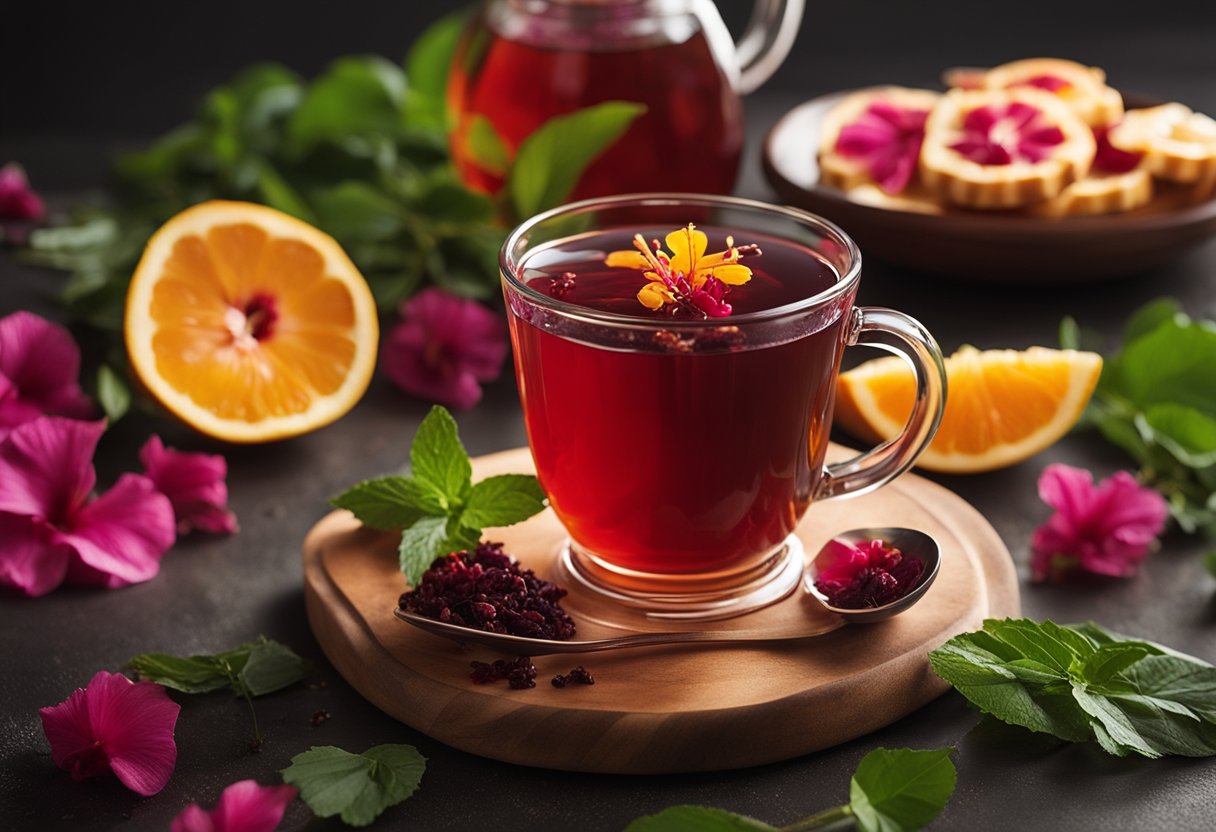
In this section, you’ll find common inquiries about elevating the taste of hibiscus tea with simple additions and techniques.
What can I add to hibiscus tea to enhance its flavor?
You can enhance the flavor of your hibiscus tea with a splash of lemon juice, a few mint leaves, or a cinnamon stick for warmth. Experiment with different additions to find your perfect flavor combination.
How do I sweeten hibiscus tea without overpowering it?
To sweeten your hibiscus tea without overwhelming its natural tangy flavor, try adding a teaspoon of honey or agave syrup. These natural sweeteners complement the tea’s tartness while providing a smooth sweetness.
Which fruits pair well with hibiscus for a refreshing iced tea?
For a refreshing iced hibiscus tea, pair it with fruits like sliced oranges, strawberries, or raspberries. These fruits not only add a sweet and tangy note but also enhance the tea’s vibrant color.
Is there a way to make hibiscus tea creamier?
Yes, to make your hibiscus tea creamier, consider stirring in a tablespoon of coconut milk or a dollop of frothed milk. These dairy and non-dairy options add a rich texture and a subtle creaminess.
Can spices be used to improve the flavor of hibiscus tea?
Certainly! Spices such as cloves, ginger, or cardamom can be steeped with the tea to introduce a warm and aromatic dimension to the flavor profile.
What are some healthy sweetener alternatives for hibiscus tea?
For a healthier alternative to refined sugar, opt for stevia or monk fruit sweetener. These calorie-free options provide a sweet taste without the added sugar content.
